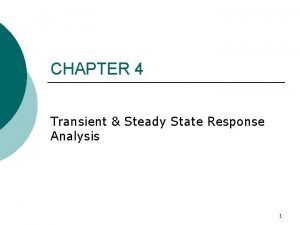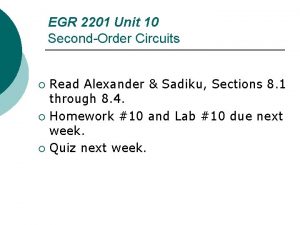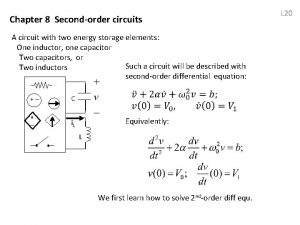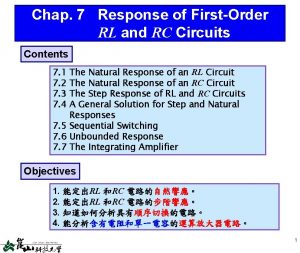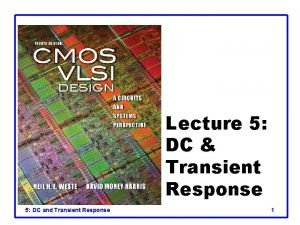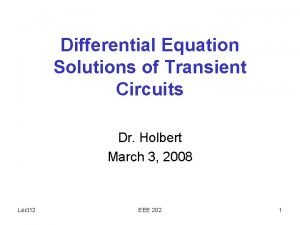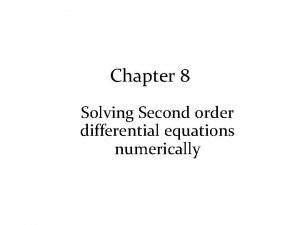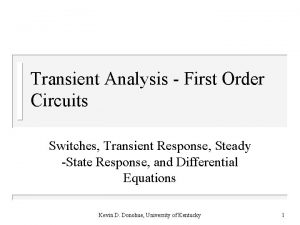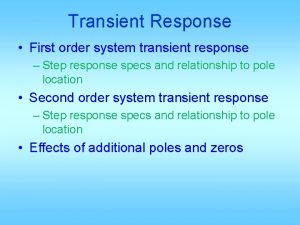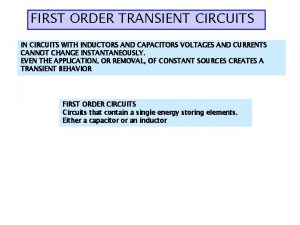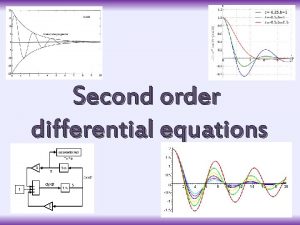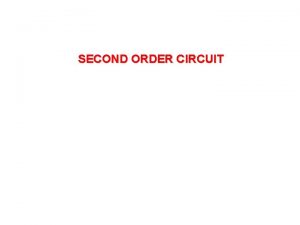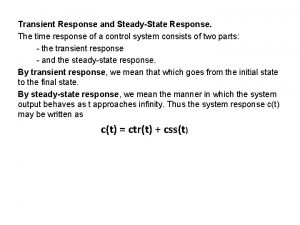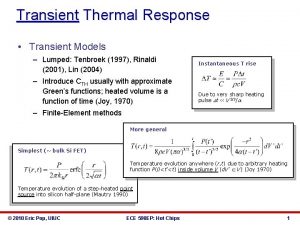Transient Response for Second Order Circuits Characteristics Equations










- Slides: 10

Transient Response for Second. Order Circuits Characteristics Equations, Overdamped-, Underdamped-, and Critically Damped Circuits Kevin D. Donohue, University of Kentucky 1

Second-Order Circuits: In previous work, circuits were limited to one energy storage element, which resulted in first-order differential equations. Now, a second independent energy storage element will be added to the circuits to result in second order differential equations: Kevin D. Donohue, University of Kentucky 2

Example Find the differential equation for the circuit below in terms of vc and also terms of i. L Show: Kevin D. Donohue, University of Kentucky 3

Example Find the differential equation for the circuit below in terms of vc and also terms of i. L(t) is(t) R C + vc(t) _ L Show: Kevin D. Donohue, University of Kentucky 4

Solving Second-Order Systems: Ø Ø The method for determining the forced solution is the same for both first and second order circuits. The new aspects in solving a second order circuit are the possible forms of natural solutions and the requirement for two independent initial conditions to resolve the unknown coefficients. In general the natural response of a second-order system will be of the form: Kevin D. Donohue, University of Kentucky 5

Natural Solutions Ø Find characteristic equation from homogeneous equation: Ø Convert to polynomial by the following substitution: to obtain Ø Based on the roots of the characteristic equation, the natural solution will take on one of three particular forms. Roots given by: Kevin D. Donohue, University of Kentucky 6

Overdamped Ø If roots are real and distinct ( solution becomes ), natural a 1=2 a 1=-3 Kevin D. Donohue, University of Kentucky 7

Critically Damped Ø If roots are real and repeated ( natural solution becomes ), a 1=2 a 1=-3 Kevin D. Donohue, University of Kentucky 8

Underdamped Ø If roots are complex ( becomes: ), natural solution or Kevin D. Donohue, University of Kentucky 9

Example Ø Find the unit step response for vc and i. L for the circuit below when: a) R=16 , L=2 H, C=1/24 F b) R=10 , L=1/4 H, C=1/100 F c) R=2 , L=1/3 H, C=1/6 F Show: a) b) c) Kevin D. Donohue, University of Kentucky 10
 Unit step response
Unit step response Transient and steady state response in control system
Transient and steady state response in control system First and second order circuits
First and second order circuits How to solve second order circuits
How to solve second order circuits Rc response
Rc response Transient response in vlsi
Transient response in vlsi Rw + vo c inverter transient response vod inverte...
Rw + vo c inverter transient response vod inverte... Euler midpoint method
Euler midpoint method Natural solution
Natural solution Runge kutta second order formula
Runge kutta second order formula Differential equations general solutions
Differential equations general solutions

